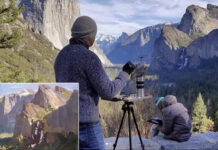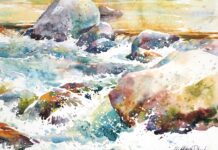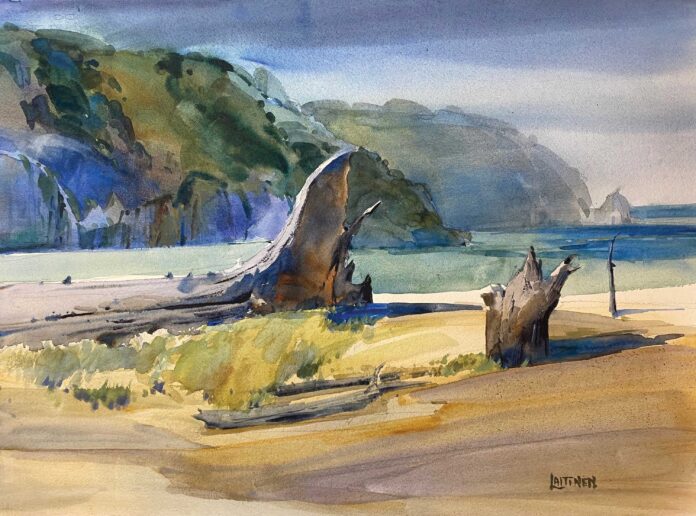
When painting with watercolor en plein air, follow this advice for the best shapes, angles, and experience.
by Dale Laitinen
1. Use the largest shapes you can identify in your subject to add structure to the painting. Shift your mind from the objects in the landscape to flat shapes that relate to each other; I call it shape-shifting. Shapes can also be used to create scale, direction, and focal interest.
2. Use negative shapes to hold positive shapes in place. The positive shape is your subject, the negative shape is the space around it. For instance, a tree trunk and limbs are positive shapes, and the empty space around the subject is the negative shape.
3. Direct the viewer by using horizontals, diagonals, and verticals. In “Sun-Washed Slopes,” I used the angles of the snowfield to direct the eye to the shoreline, and horizontals for the placid lake. Due to the subject matter, verticals didn’t come into play much.
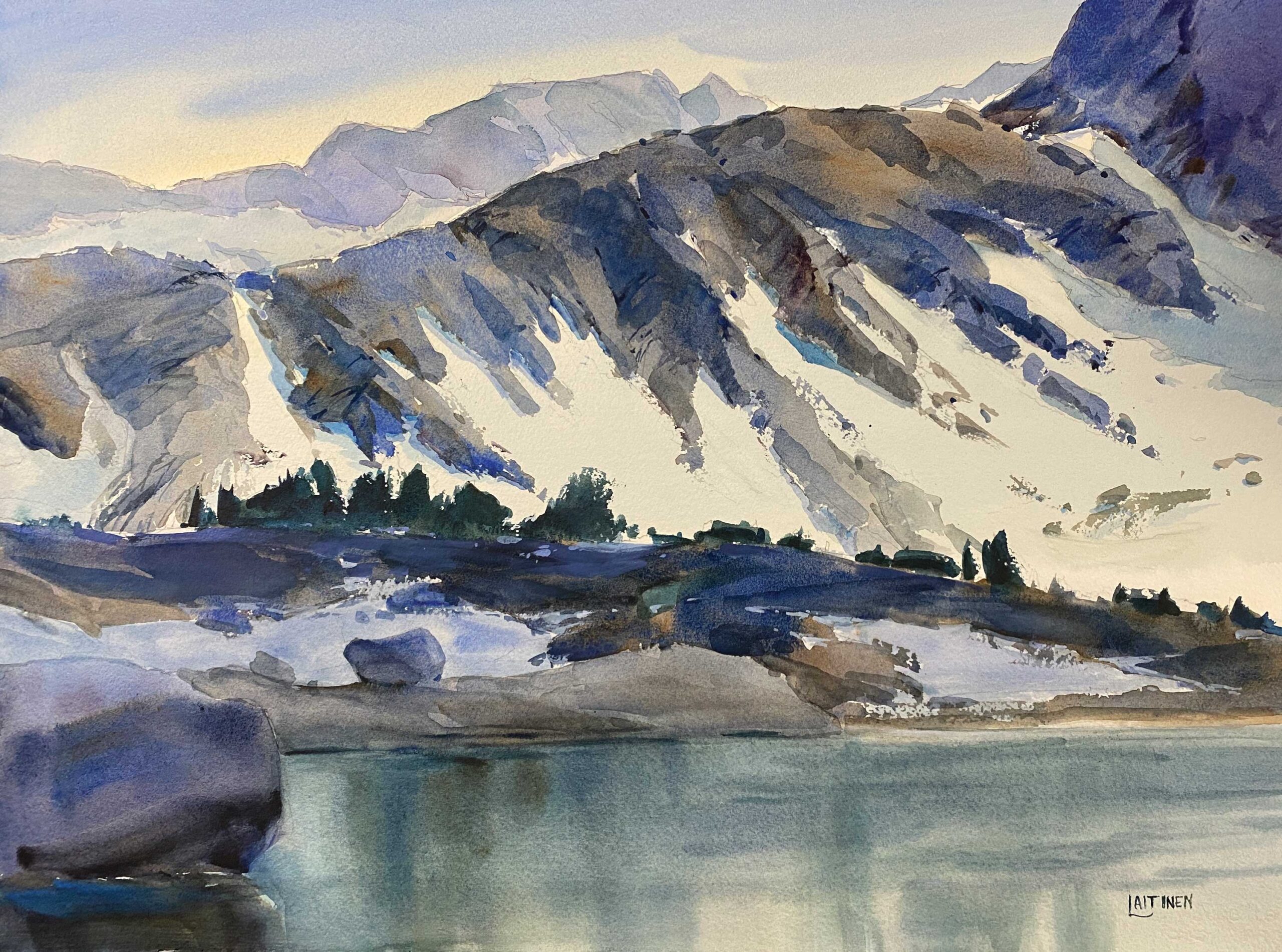
4. Pathways can also be made for viewers using combinations of the basic elements of art — line, shape, value, color, and texture. Use them to direct the eye and unify the composition. Everything in the universe is connected to everything else. The same goes for art.
5. Use contrast to depict light and shadow. For watercolor, that means painting dark over light. To paint a boulder, for example, introduce lighter washes first then add darker shadows. In painting the dark values, you actually reveal the light hitting the boulder. Add a cast shadow and the likeness of the rock is complete. Strong contrast leads to a strong result.
6. Use large, wide brushes as long as possible. I employ 3-inch, 2-inch, 1 1/2-inch, and 1-inch to keep my washes fresh and free of busy brushstrokes. As the painting progresses, the shapes become less general and the brushes I use become smaller.
7. Turn to round brushes for more detailed or intricate shapes. Building confidence with large flat brush handling means you’ll need to rely less on the smaller rounds. As a result, your watercolor will be simpler and fresher.
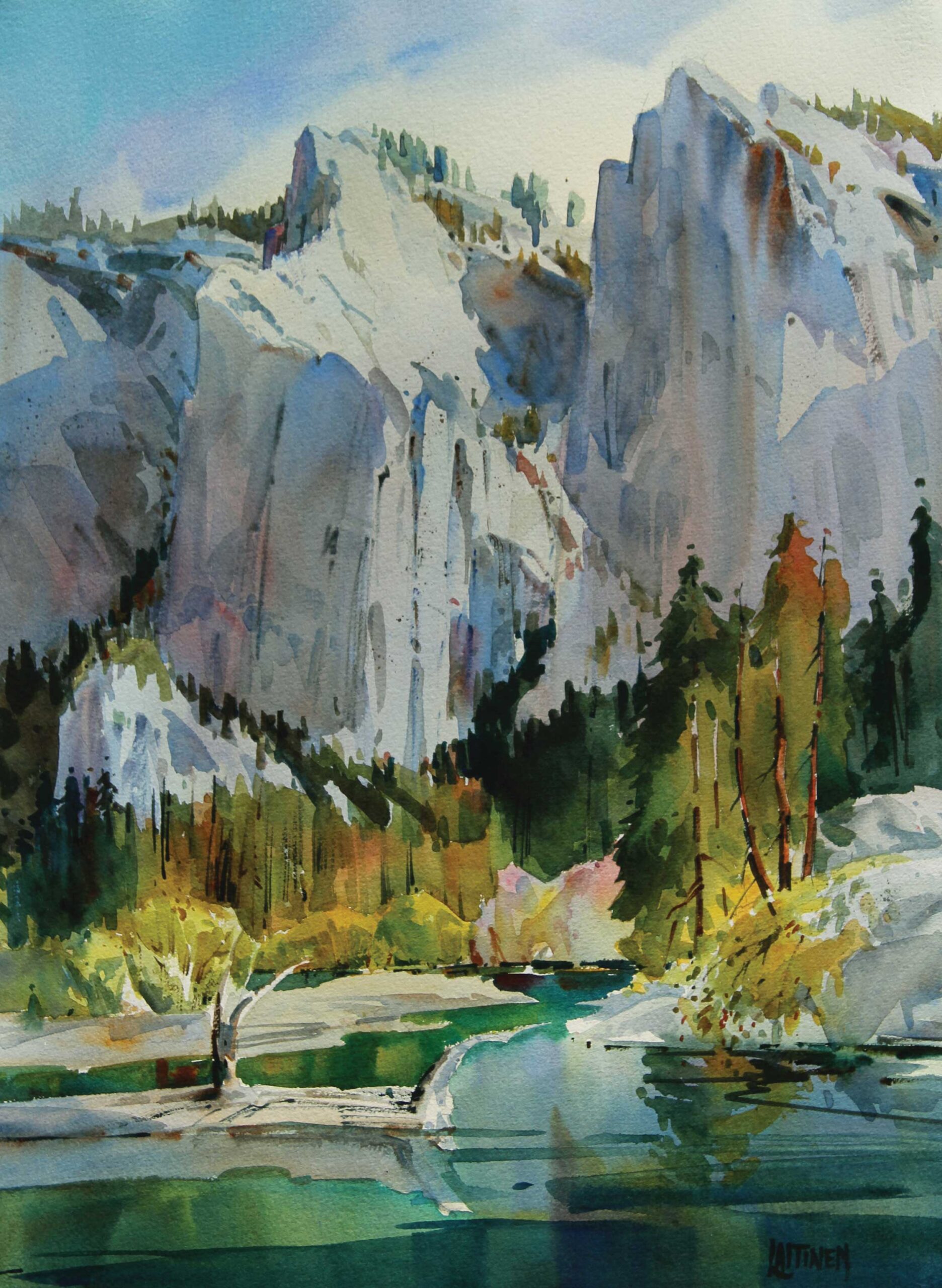
8. “Less is more” is an oft-spoken observation, aimed pointedly at an overly detailed artwork. What you see first should be the last to be painted. For example, when portraying a group of trees, paint the general under-shapes first, then work to the surface details. That way your underlying washes support the smaller shapes, and ultimately the details.
9. Shadows and atmospheric conditions change with time. Refrain from working all day on the same painting. As weather and the light change, the original intent of your painting may get lost. It’s best to stop at a certain point; you can always finish in the studio. Beginning a new work is more productive, and allows you a new perspective on the subject.

Connect with the artist at dalelaitinen.com.
PleinAir® magazine is focused on landscape paintings by historical and contemporary artists, art collections, events, and the process of creating plein air paintings. Beautifully designed with rich reproductions on high-quality paper, PleinAir features the top artists and artworks from around the world. Start your subscription here!


